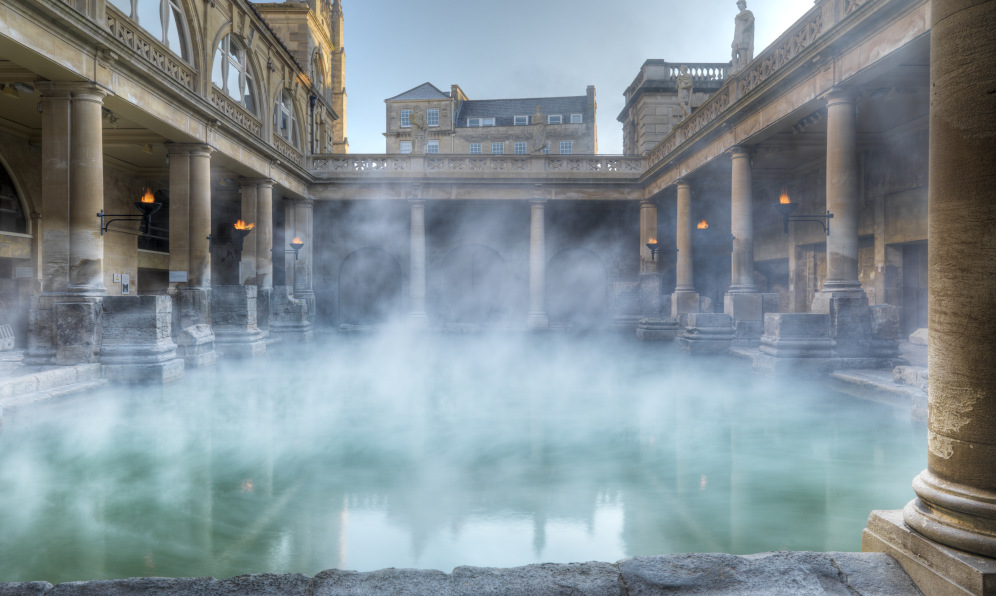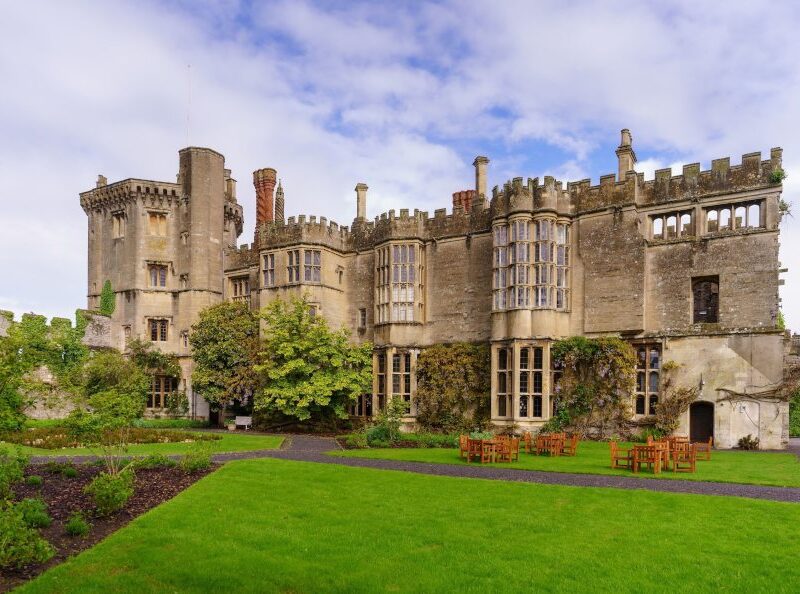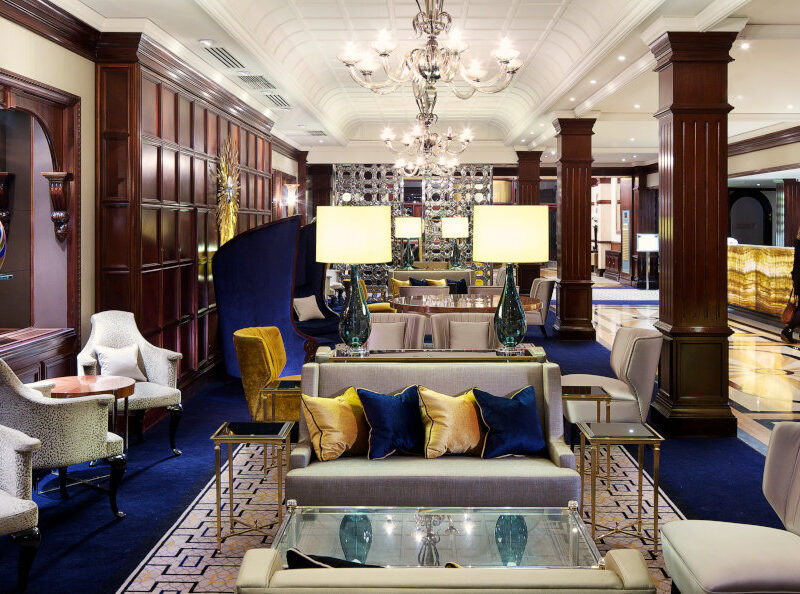
Weekends Away: Bath
Weekends away: Bath
Why the spa city has something for all
Bath’s charms are hardly a hidden secret. This UNESCO World Heritage Site has long been a draw as a spa town, from the Romans onwards, all reaping the benefits of its ‘healing’ waters. The Georgians too, with Jane Austen bringing to life the social season in the city in her books.
Today, visitors still come for the waters, which they can enjoy from the Thermae Spa and its rooftop pool. Jane Austen fans also come in their droves. They’re now joined by the Bridgerton fans, with many of the city’s landmarks featuring in the hit show. It seems producers can’t keep away – Bath’s latest starring role was in Wonka. But it’s easy to see why. Against a backdrop of rolling hills, there are stunningly preserved Georgian crescents of honey-coloured stone, a shop-lined bridge to rival Florence’s Ponte Vecchio, and narrow cobbled streets to wander, all making Bath an atmospheric spot.
It’s no surprise that it is a popular destination for weekends away. Our base was the Apex Hotel, a modern place that is super-family friendly and won’t blow the budget, unlike some of the high-end boutique options in the city. The rooms are contemporary, quiet, very comfortable and, for a family, you’ll get two full-sized single beds for the kids rather than a teeny sofabed that so many hotels offer.
There’s also a pool – this was a big hit with our brood after a day sightseeing, and it has spa-like features in the actual pool itself so everyone can use them, from a waterfall to jet massage beds. The only thing to factor in is that parking is not on site – with the nearest car park being five minutes’ walk away (£17 to £22 for 24 hours). But the hotel is very central so you can forget about your car for the weekend. It is easy to wander between most of Bath’s main attractions or, if you prefer, you can take a hop-on-hop-off bus tour.
Images: House of Frankenstein, Royal Crescent (c) Visit Bath, The Elder. Pictured top: (c) Roman Baths
We grabbed a map and headed out to explore. First stop was the House of Frankenstein. When I was last in Bath in 2021, the attraction was about to open and I always planned to return to visit.
The city’s literary connections run deeper than Jane Austen and there is altogether a darker side. It was here that Mary Shelley wrote Frankenstein. Her own tragic story is more bizarre and horrifying than any fiction and it is brought to life in the museum, as is her ‘creature’ – Frankenstein’s monster has been recreated as she described it in her writing. This breathing 8ft animatronic is fascinating and very unlike the cartoonish green-faced version that became the popular representation. Down in the basement is an immersive jump-scare walkthrough in the dark – my tween and teen loved it (as did we). The museum was a hit all-round.
Of course, we had to take in a Jane Austen connection whilst in Bath. We went to the Jane Austen Centre (it is based in Gay Street a few doors away from where Jane lived). There are plenty of information boards for Austen fans, and there are costumes to pose in for photos.
For an evocative insight into Georgian Bath, try No.1 Royal Crescent where you can wander through a well-to-do period home listening to the recorded tales of a fictional family that had rented the place for the social season. Bridgerton fans will recognise the house as one of the filming locations (doubling as the Featheringtons’ London home). Lady Danbury’s townhouse is Bath’s Holburne Museum, a grand building housing a range of art, including works by Gainsborough.
Bath also offers the Victoria Art Gallery: unfortunately, the main floor is closed for conservation work but currently has an exhibition of Ladybird Books in the lower gallery. Our kids looked on bemused as my husband and I realised how disturbed we’d both been as children by the Ladybird ‘Easy-Reading’ version of Rumpelstiltskin. So much for easy reading – it gave us nightmares!
The city’s most well-known attraction is, of course, its Roman Baths, which we’d been to previously, and is a must for first-time visitors. The sight is quite the jaw-dropper with its complex of pools and insight into Roman life.
Images: Apex Hotel room and pool, Pulteney Bridge (c) Visit Bath
After you’ve had your fill of history, Bath has no shortage of stores to wander around, from independent bookshops to vintage boutiques. The independent vibe continues with cool cafes where you can refuel on coffee and cakes. Austen fans could head for afternoon tea at the Pump Room, which was used as a setting in her novels Northanger Abbey and Persuasion.
There are plenty of good places to eat. We dined at The Elder. Owned by Mike Robinson (who is co-owner of Michelin-starred The Harwood Arms in Fulham), it specialises in game and wild food. Tucked inside the Hotel Indigo Bath on South Parade, this is a gorgeous-looking spot with wood panels, banquette seating and hunting prints on the walls.
We enjoyed a delicious wild mallard pie for two. While very different to what I was expecting, it was wonderful – with rare duck breast underneath a layer of sausage meat and a dome of pastry. Alongside it was a confit of the leg which was tender and moist with a crisp skin. We also tried pave of Bathurst estate fallow venison, the rich game cooked perfectly and served with a side of bone marrow.
With its proximity to London, Bath is one of those destinations where you know you’re likely to be back. This means you can take it at a more leisurely pace. We had ticked off plenty but also loved our chance to spend our Sunday morning with a leisurely breakfast at the hotel and another dip in the pool. More shopping, more coffee, and wandering the historic streets…
Apex Hotel, rooms from £120 for a City Double.
Visit Bath Tourist Info: visitbath.co.uk
READ MORE:
We review The Elder





